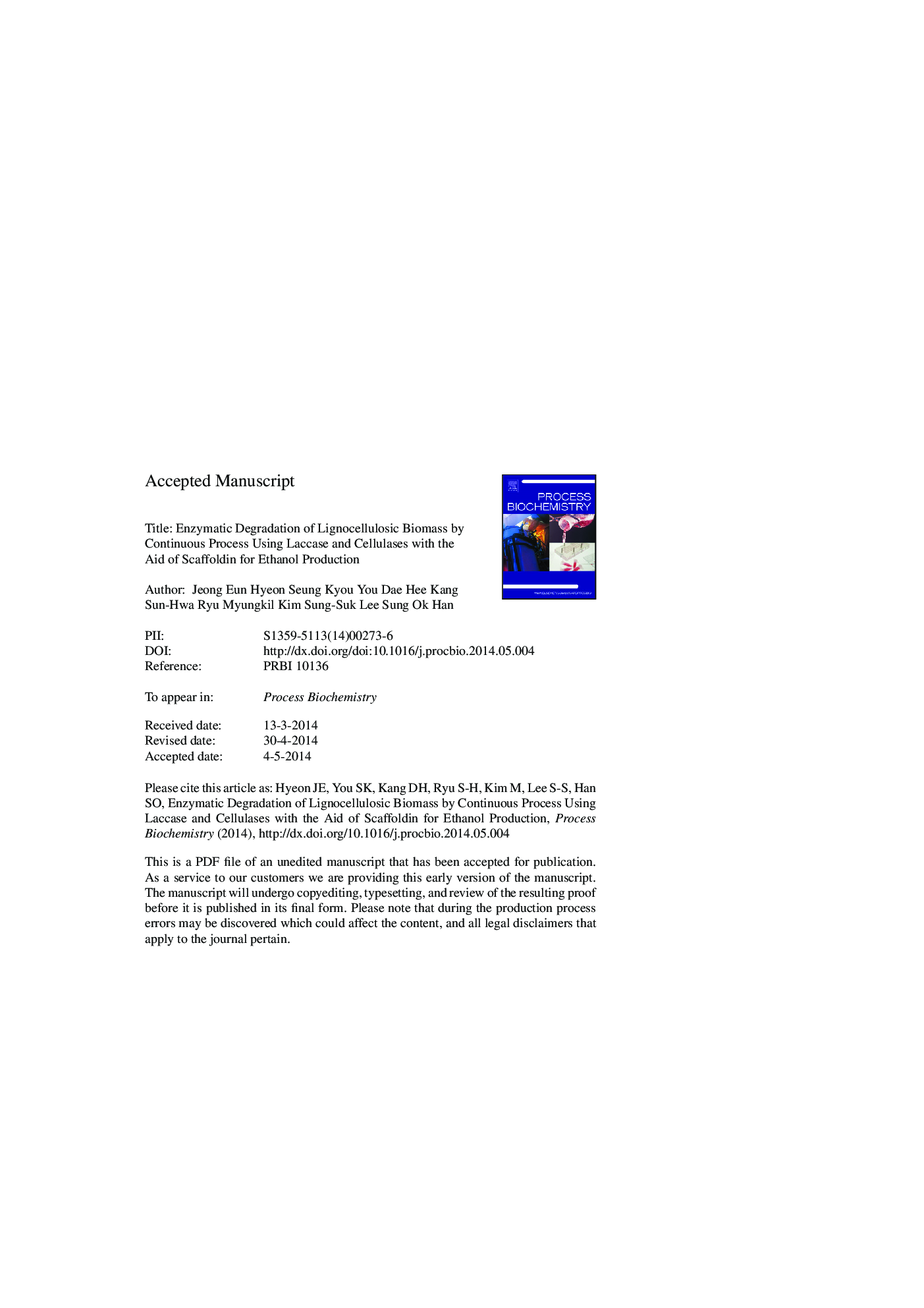| Article ID | Journal | Published Year | Pages | File Type |
|---|---|---|---|---|
| 10235396 | Process Biochemistry | 2014 | 37 Pages |
Abstract
Biological processes for the degradation of intractable materials are still not considered to be practical due to the slow rates of enzymatic degradation. Cellulosomes are complexed enzyme systems with great degradative potential and one of the strategies for overcoming this problem. In this study, the laccase CueO from Escherichia coli was fused to the dockerin domain of a cellulosome system and further assembled with the scaffoldin miniCbpA, forming a laccase-miniCbpA complex. Compared to the individual subunits, laccase-miniCbpA complex caused a noticeable 2.1-fold increase in enzyme activity levels and enhanced degradation of various synthetic dyes, showing an increase of approximately 1.6-fold. Also, pretreated barley straw by laccase complexes was efficiently converted to bioethanol using a cellulase producing Saccharomyces cerevisiae strain. The laccase complexes caused a 2.6-fold increase in the amount of reduced sugar with an insoluble substrate in conditions with an identical amount of enzymes. The cellulolytic yeast with the aid of laccase complexes produced 2.34Â g/L ethanol after 72Â h, indicating an increase of approximately 2.1-fold compared to fermentation without the laccase complexes. This demonstrates the feasibility of developing an efficient laccase complex based on the cellulosome and this strategy may be used to degrade recalcitrant materials.
Related Topics
Physical Sciences and Engineering
Chemical Engineering
Bioengineering
Authors
Jeong Eun Hyeon, Seung Kyou You, Dae Hee Kang, Sun-Hwa Ryu, Myungkil Kim, Sung-Suk Lee, Sung Ok Han,
